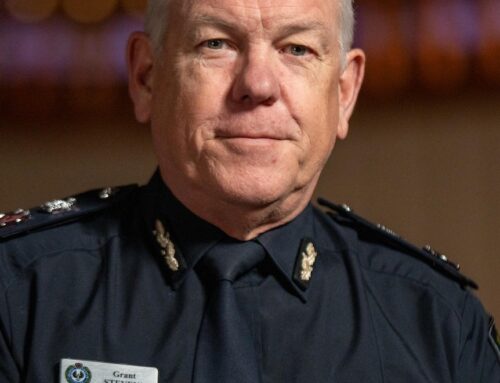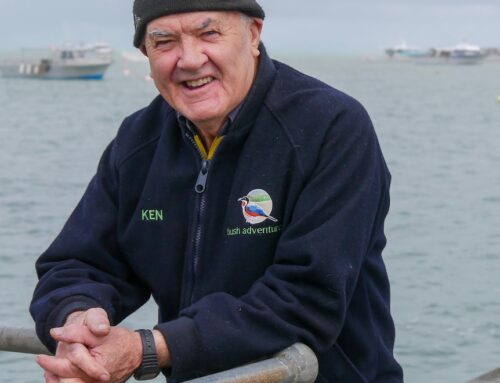When four young siblings were found alive after surviving 40 days lost in the Amazon jungle after a plane crash, the world was astonished.
Survival experts say the reason the children, aged 13, 9, 4 and 2, managed the extraordinary feat was because they were indigenous to the region and understood both the dangers of the environment, as well as how it could help them.
So, with families across Australia embarking on school holiday adventures in the next few weeks, we asked outdoor experts for their tips on how to survive if you become lost or stranded in the outback, the tropics or the snowy alps, where conditions can quickly deteriorate.
Here are their tips for how to make it home alive.
In the outback, ‘remote means REMOTE’
Bob Cooper is Western Australian born and bred, and has spent decades exploring the vast remote reaches of the nation’s biggest state.
The former Kimberley-based cray fisher and charter boat operator says he’s long been fascinated with “how the bush works” and has been a keen student of what’s proved to be a formidable teacher.
“I’ve discovered plenty about the bush environment and how it works its magic,” Bob says.
“It’s not necessarily harsh, it’s just unforgiving.”
Bob has had his fair share of mishaps during his outback adventures —on land, at sea and in the air.
“I’ve had three mayday situations at sea and I ended up in the water on two of those occasions,” he recalls.
“There was one mishap in a helicopter where we had to walk out of the Great Sandy Desert to get help and several mishaps in four-wheel-drives in remote locations.
“In all these hair-raising experiences some survival skills where needed, but more importantly, it proved that prior planning prevented a mishap turning into a tragedy.”
Bob’s near-misses prompted him to start his own outback survival training school and, for more than 30 years, he’s been educating outdoor-enthusiasts on how to handle themselves in an emergency with skills from regulating body temperature, to finding shelter and sending signals.
Preparation is key
Bob has his own range of supplies that he recommends whenever he ventures outback, but his essentials include adequate water supply and a way to collect it, and at least two means of lighting a fire.
And, he says, these should all be able to fit inside a survival kit small enough to fit in your pocket, so you can still carry them when you’re tired and desperate.
“My first kit was a blue soap container,” he recalls.
“It was full of multipurpose items including two clear plastic bags for water transpiration, water carrying and making items waterproof.”
But ultimately, he believes the biggest danger posed to survival lurks in the mind, not in the wild.
“Complacency and the attitude that ‘she’ll be right, it won’t happen to me’, that’s the major hazard,” he says.
“In Australia remote means REMOTE. There’s no back-up easily provided or supplied so you need to be able to think through solutions.”
And while the compulsion to act can be overwhelming during a crisis, Bob says sometimes doing nothing is a better plan of attack.
“My best advice is to sit down and give it some time for the panic to ease and to let the rational side of your brain take over,” he says.
“Write out a simple plan based on reality and rationale.
“The failure to plan — that can turn a mishap into a tragedy.”
In the tropics, even the trees can hurt you
The Gubby family from Cairns are the outdoors, adventurous type who think nothing of strapping on their backpacks and heading off to discover new parts of Australia.
Before having kids, Bernice and husband Paul were serious multi-day hikers, a pursuit they renewed once their youngest of three children turned seven.
In the years since, the family has traversed and camped at some of Australia’s most challenging, and stunning, locations — in Victoria, Tasmania, South Australia, the Northern Territory, and in the dense, tropical rainforests in their own regional backyard in Far North Queensland.
Bernice said the tropics posed some unique hazards, especially the fearsome flora – some stinging trees are so venomous they can land you in hospital.
But the Gubbys have a hack for that, one more commonly used for removing unsightly body hair.
“We take wax strips with us just in case we encounter a stinging tree, and we’ve always got antihistamines in our first aid kit as well,” Bernice said.
“When my middle child was one year old we encountered a stinging tree and we were able to use the wax strips to remove as many of the [tree’s] hairs as we could.
“We gave him an antihistamine when we got back to camp which helped him to recover.”
MacGyver = survivor
Wax strips and first aid supplies are just part of what the Gubbys call their ‘MacGyver kit’, in reference to the 1980s TV hero who was never short of a makeshift solution to an adverse situation.
“We always have cable ties and duct tape, different types of glue, various tools, spare fuses and wire cable,” she said.
“If your backpack breaks or gets tears, or your tent poles break, you can usually fix all that with duct tape.
“We got completely smashed by an unexpected storm while camping once and our entire tent got ripped and flooded, and we managed to rebuild it with duct tape and cable ties.”
Whether it be hiking, camping or four-wheel-driving, the Gubbys’ most important survival tool is their personal locator beacon (PLB) which sends a satellite signal to emergency services when activated.
“We’ve always got the PLB on us and we also register our hikes with the Australian Maritime Safety Authority (AMSA),” Bernice says.
“We also make sure we’ve got the ability to collect and purify water so we always take water purification tablets and a LifeStraw [filtration device].
“You can survive without food for a long time, but you can’t survive without water and the medical stuff.”
And then there are extra measures worth taking to protect hikers and campers from the insects, spiders and other creatures of the tropics that might bite you.
For mozzies and midges, Bernice recommends covering up limbs and using repellents that contain DEET.
But when it comes to crocs, she says the best defence is to obey warning signs, be aware, don’t camp near rivers that are known crocodile habitats, and seriously think about where you swim.
In the alps, the biggest danger is panic
Mount Hotham’s Ski Patrol director, Bill Barker, has been working on the mountain for more than 30 years, and has also helped guide people in the Himalayas and in Antarctica.
He sees multiple search and rescue operations each season as people become lost in Victoria’s wintry high country.
“The first thing is: don’t panic,” he advises.
Bill says conserving energy and staying put on high terrain can vastly help improve your chances of a faster rescue.
“You want to stay still and definitely don’t walk downhill,” he says.
“People have a habit of walking downhill in alpine regions thinking they’re going to get to somewhere safe, but they usually end up in all sorts of bother.
“The terrain gets thicker and steeper as you walk downhill, and it’s harder for rescuers to find you.”
Carrying a mobile phone with a reliable battery is also a must, and remaining at a higher altitude can help secure a better signal to call for help.
“Once you drop down into the valley, that’s when you will most likely lose phone reception, but if you are up high there’s a good chance that you will have some sort of reception,” he says.
Bill says if you are lost and don’t have enough signal to make a phone call, try to text friends or family with your last known location.
“Texting will often get through when a call won’t,” he says.
Apps like Emergency+ , which was developed by Australia’s emergency services, use GPS functionality built into smart phones to help emergency services secure critical location details.
Bill says if you are lost, try to make yourself or your location visible by using colourful skis, snowboards or jackets that searchers can easily see from the air.
Stay dry if you can
When in the alps, one of the most important ways to prevent potentially fatal hypothermia is to stay dry, which includes not sweating too much.
It’s also important for people to separate themselves from the snow and elements, which can be done by sitting on branches, snowboards, or any gear available at the time.
Making holes in the snow and covering them with tree branches or other available materials can be a simple but effective measure to stave off hypothermia.
“The snow is quite insulated,” Bill says.
“You would be warmer in the snow than out on the surface where you would be exposed to the winds and the wind-chill factor.”
Loading…
Those with practice can also make an igloo or a snow cave by digging into a snow drift, but it can take a long time for those unfamiliar with how to do it, and lead to higher risks of becoming damp.
Bill says Australia’s warmer temperatures in winter can lead to a mixture of rain and snow, but if you are trekking in colder temperatures with dry snow, you are less likely to get wet and suffer hypothermia.
“Really that milder snowfall can be a problem,” says.
Australia’s winter winds and poor visibility can also be hazardous and lead to sudden blizzard or white-out conditions that can be dangerous and cause falls.
Posted , updated




